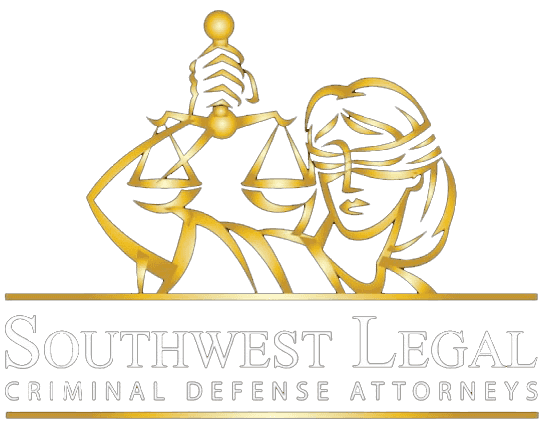Proposition 57, passed by California voters in November 2016, significantly changed how and when certain inmates can become eligible for parole. The law aimed to reduce the prison population, encourage rehabilitation, and shift decisions about juvenile criminal trials from prosecutors to judges.
If you or someone you know is incarcerated in California, understanding how Prop 57 affects parole eligibility can be vital. This guide explains everything you need to know—from the basic rules and timelines to the key steps you can take to benefit from this law.
What Is Proposition 57?
Proposition 57, officially titled the “Public Safety and Rehabilitation Act of 2016,” was designed to:
-
Allow earlier parole consideration for people convicted of nonviolent felonies.
-
Expand sentence-reduction credits for good behavior and rehabilitative achievements.
-
Return authority to judges, not prosecutors, to decide if juveniles aged 14 or older should be tried as adults.
The overall goal was to reduce prison overcrowding while maintaining public safety and promoting inmate rehabilitation.
Parole Eligibility Before and After Proposition 57
Before Prop 57
Inmates typically had to serve their entire sentence—including enhancements (like firearm use or gang involvement) and consecutive sentences—before becoming eligible for parole consideration. Sentence credits for good behavior and program participation were limited and strictly regulated.
After Prop 57
Under Prop 57, many inmates convicted of nonviolent felonies can now become eligible for parole consideration once they complete their base term—that is, the term for the main offense, not including any sentence enhancements or additional consecutive terms.
In addition, California’s Department of Corrections and Rehabilitation (CDCR) now has greater authority to award credits to inmates for:
-
Good behavior
-
Participation in educational, vocational, or rehabilitation programs
-
Milestone completions, such as earning a GED or college degree
These credits can reduce the time inmates must serve before becoming eligible for parole.
What Counts as a “Nonviolent” Felony?
California law defines nonviolent felonies based on what is not listed in Penal Code section 667.5(c), which includes specific violent crimes such as murder, rape, robbery, and certain types of assault. If an offense is not on that list, it is typically considered nonviolent under the law—even if it may involve serious conduct.
This classification has sparked controversy, as some offenses the public might consider violent are still eligible under Prop 57. However, for the purpose of parole eligibility, the legal definition is what matters.
Who Is Eligible for Parole Under Proposition 57?
Eligibility depends on your sentence type and whether your conviction is classified as nonviolent.
Determinate Sentences
A determinate sentence has a fixed end date—for example, a five-year sentence.
If you’re serving a determinate sentence for a nonviolent felony, you may be eligible for parole consideration after completing the base term of your sentence, minus any earned credits. You’ll be reviewed through an administrative review process, not a formal hearing.
Indeterminate Sentences
An indeterminate sentence, such as 25 years to life, doesn’t have a set end date and usually applies to more serious crimes. In the past, people serving life terms for nonviolent third strikes were not considered for early parole.
Following court rulings and regulation changes, some individuals serving indeterminate sentences for nonviolent offenses—especially those sentenced under the Three Strikes law—are now also eligible for parole under Prop 57 after serving the base term of their commitment offense.
These individuals receive a full parole hearing in front of a board.
How the Parole Process Works Under Prop 57
The process for parole consideration under Prop 57 varies based on the type of sentence.
1. Administrative Review (Determinate Sentences)
-
CDCR screens the inmate’s eligibility.
-
A parole board staff member conducts a nonviolent parole review, which includes examining criminal history, in-prison behavior, disciplinary record, and rehabilitation efforts.
-
No formal hearing is held; instead, a paper-based review is conducted.
-
Victims and district attorneys are notified and may submit statements.
-
If approved, the inmate is usually released within 60 days under community supervision.
-
If denied, a new review is typically allowed after one year.
2. Parole Suitability Hearing (Indeterminate Sentences)
-
CDCR schedules a hearing once the inmate has served the required base term.
-
A panel of parole commissioners holds a formal hearing.
-
The hearing includes a review of rehabilitation progress, psychological evaluations, and a reentry plan.
-
Victims and prosecutors may attend and provide input.
-
If approved, the inmate is released under supervision.
-
If denied, the board will set the timeframe for the next review (usually 3 to 15 years, depending on the case).
What Are CDCR Credits and How Do They Work?
CDCR awards credits to incentivize good conduct and participation in rehabilitative programs. These credits include:
-
Milestone Completion Credits: For achieving educational, vocational, or rehabilitative program milestones.
-
Educational Merit Credits: For earning high school diplomas, college degrees, or other educational certificates.
-
Rehabilitative Achievement Credits: For participation in self-help groups or religious programs.
-
Good Conduct Credits: For staying discipline-free and following institutional rules.
These credits can significantly reduce the time served and accelerate parole eligibility.
Key Benefits of Prop 57
-
Earlier Parole Consideration: Individuals serving nonviolent sentences no longer have to serve enhancements before parole review.
-
Incentives for Rehabilitation: Inmates are rewarded for pursuing education and participating in programs.
-
Cost Savings for the State: By reducing prison populations, California saves money on incarceration costs.
-
Increased Fairness: Judges—not prosecutors—now decide whether juveniles can be tried as adults.
Common Misconceptions
“Prop 57 lets violent criminals out early.”
False. Only inmates serving time for crimes not legally classified as violent are eligible under Prop 57. The confusion arises from the legal definition of “violent” versus public perception.
“If I’m eligible, I’ll automatically get released.”
Not true. Eligibility only means you get considered for parole. Release is not guaranteed and depends on your behavior, risk assessments, and reentry planning.
Practical Steps to Take
If you or someone you know may benefit from Proposition 57:
-
Confirm Eligibility: Review the conviction details to determine whether the offense is considered nonviolent.
-
Earn Credits: Participate in every program available—education, vocational training, self-help, and therapy.
-
Maintain Good Behavior: Avoid disciplinary actions, as these can delay parole consideration.
-
Prepare a Release Plan: Have a solid plan in place for housing, employment, and support systems.
-
Stay Informed: Rules and credit-earning opportunities can change. Ask prison staff or legal advocates for updates.
Conclusion
Proposition 57 offers a path to earlier parole consideration for thousands of individuals serving time for nonviolent offenses in California. It also promotes rehabilitation, encourages personal growth, and reduces state incarceration costs. Understanding how the process works and taking the right steps to qualify can make a significant difference in parole outcomes.
While not everyone will benefit from the law, and not every eligible person will be granted parole, Prop 57 creates a real opportunity for those who are committed to change.
If you’re unsure about your eligibility or how to move forward, consulting with an attorney or parole expert can help guide the process.





